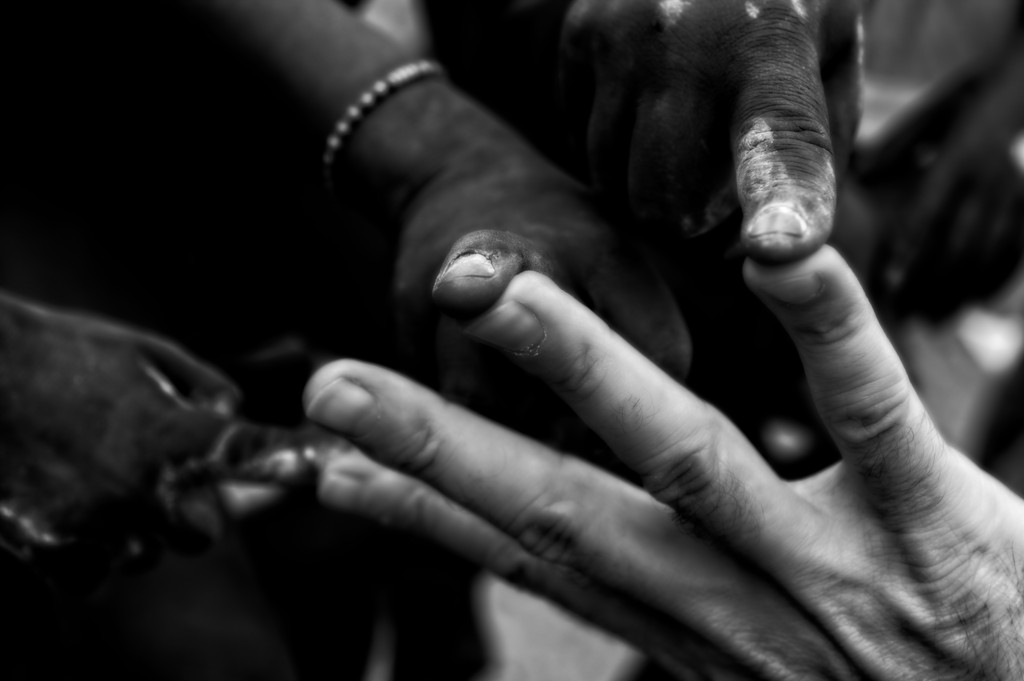No one can make you feel inferior without your consent.
Eleanor Roosevelt

With the realization of the neighboring Gibe III dam project (the hydropower plant is operative since 2015) irrigation canals have paved the way for sugar cane and cotton plantations (3) over the past decade. Furthermore, the region is nowadays less remote for tourism because of upgraded roads.
Consequently, photography has become a business between autochtones and tourists. The tourists' desire to capture the exotic gets satisfied based on an asked or negotiated fee per click on the shutter release button. Cultural extremes temporarily meet at the interface of the lens. This is digested in the gallery "tourist gaze" which is named after the publication of John Ury and John Anderson (4).
Beyond individually negotiated portraying, rituals may be pictured thanks to photographic flat-rates. The gallery "Hamar" presents impressions from an initiation custom of Hamar men who have to jump several times naked over an array of aligned Zebu bulls to get the right to marry. This is preceded by the flagellation of the aspirants' female relatives for the purpose to strengthen family bonds. The consumption of fermented sorghum and the rythmic hopping to the sound of bugles and ringing bells let them provoke already initiated men to whip their backs to get scars as obvious signs of solidarity with the candidate.
While such practices have become a significant source of income for the tribes the tourist's role has been criticized to sustain an ancestral custom considered as harmful and to be in conflict with the ethical values of modern society (5).
The contents of these galleries was taken in December 2013.
(1) UNESCO's description of the lower Omo valley upon its admission to the World Heritage List (1980)
(2) M. Brittain et.al., Archaeological Review from Cambridge 28.1, 133-150 (2013)
(3) Human Rights Watch, News, June 18, 2012 ; The Oakland Institute, Land Deal Brief (2011)
(4) J. Ury & J. Andersen, The Tourist Gaze 3.0, 2011, ISBN 978-1-84920-376-0
(5) J. Lydall, "The paternalistic neighbour. A tale of the demise of cherished traditions", in C. Gabbert, S. Thubauville (Ed.): To live with others. Essays on cultural Neighbourhood in Southern Ethiopia. Cologne: R. Köppe publ., 314 (2010)